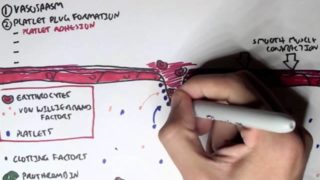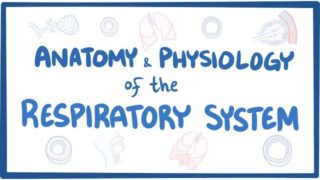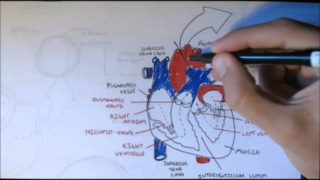Cardiac Output, Stroke volume, EDV, ESV, Ejection Fraction
Cardiac Physiology Basics. This video is available for instant download licensing here: https://www.alilamedicalmedia.com/-/galleries/narrated-videos-by-topics/cardiac-physiology-no-ecg/-/medias/63edb7b8-0506-48bc-9034-026653c1142c-cardiac-output-stroke-volume-edv-esv-ejection-fraction-narr
©Alila Medical Media. All rights reserved.
Voice by: Sue Stern.
Support us on Patreon and get FREE downloads and other great rewards: patreon.com/AlilaMedicalMedia
CARDIAC OUTPUT is the amount of blood pumped by each ventricle in one minute. It is the product of STROKE VOLUME – the amount of blood pumped in one heartbeat, and HEART RATE – the number of beats in one minute. An INcrease in either stroke volume or heart rate results in INcreased cardiac output, and vice versa. For example, during physical exercises, the heart beats faster to put out more blood in response to higher demand of the body.
It is noteworthy that the ventricles do NOT eject ALL the blood they contain in one beat. In a typical example, a ventricle is filled with about 100ml of blood at the end of its load, but only 60ml is ejected during contraction. This corresponds to an EJECTION fraction of 60%. The 100ml is the end-DIASTOLIC volume, or EDV. The 40ml that remains in the ventricle after contraction is the end-SYSTOLIC volume, or ESV. The stroke volume equals EDV minus ESV, and is dependent on 3 factors: contractility, preload, and afterload.
Contractility refers to the force of the contraction of the heart muscle. The more forceful the contraction, the more blood it ejects.
PRELOAD is RELATED to the end-diastolic volume. Preload, by definition, is the degree of STRETCH of cardiac myocytes at the end of ventricular filling, but since this parameter is not readily measurable in patients, EDV is used instead. This is because the stretch level of the wall of a ventricle INcreases as it’s filled with more and more blood; just like a balloon - the more air it contains, the more stretched it is. According to the Frank-Starling mechanism, the greater the stretch, the greater the force of contraction. In the balloon analogy, the more inflated the balloon, the more forceful it releases air when deflated.
AFTERLOAD, on the other hand, is the RESISTANCE that the ventricle must overcome to eject blood. Afterload includes 2 major components:
- Vascular pressure: The pressure in the left ventricle must be GREATER than the systemic pressure for the aortic valve to open. Similarly, the pressure in the right ventricle must exceed pulmonary pressure to open the pulmonary valve. In hypertension for example, higher vascular pressures make it more difficult for the valves to open, resulting in a REDUCED amount of ejected blood.
- Damage to the valves, such as stenosis, also presents higher resistance and leads to lower blood output.
All images/videos by Alila Medical Media are for information purposes ONLY and are NOT intended to replace professional medical advice, diagnosis or treatment. Always seek the advice of a qualified healthcare provider with any questions you may have regarding a medical condition.
Cardiac Output, Stroke volume, EDV, ESV, Ejection Fraction
Other Videos You Might Like:
Subscribe
Login
336 Comments
Newest




